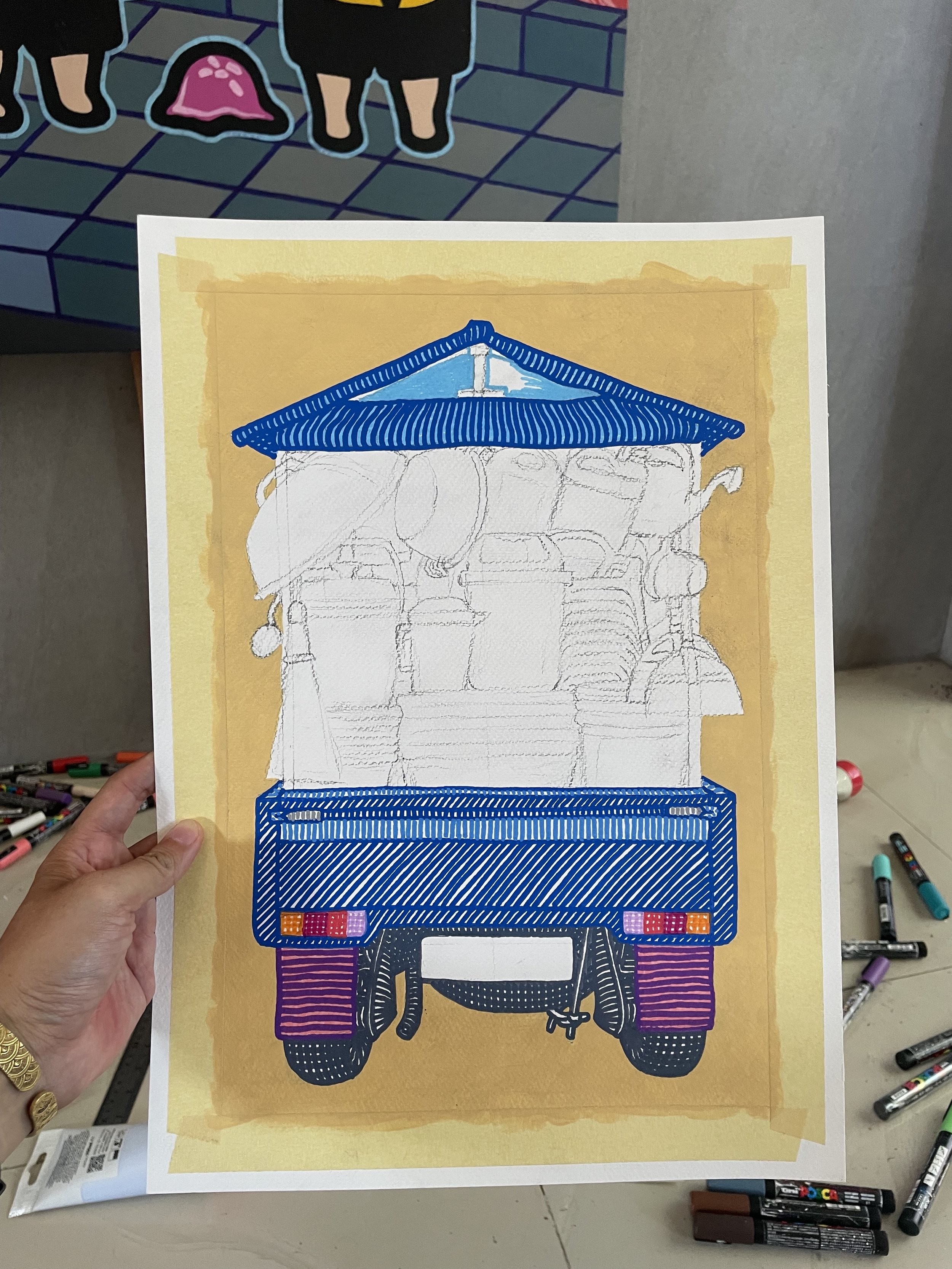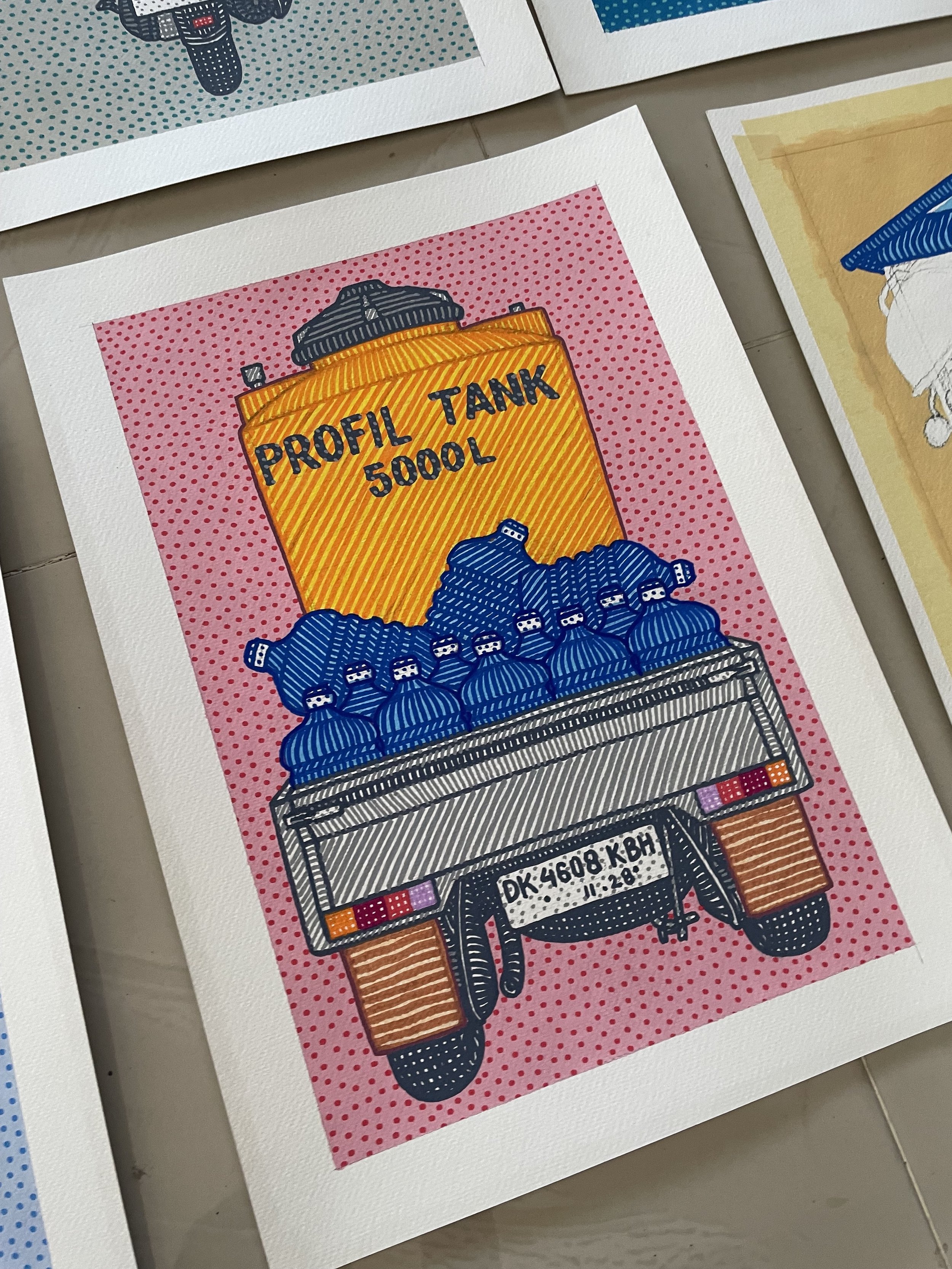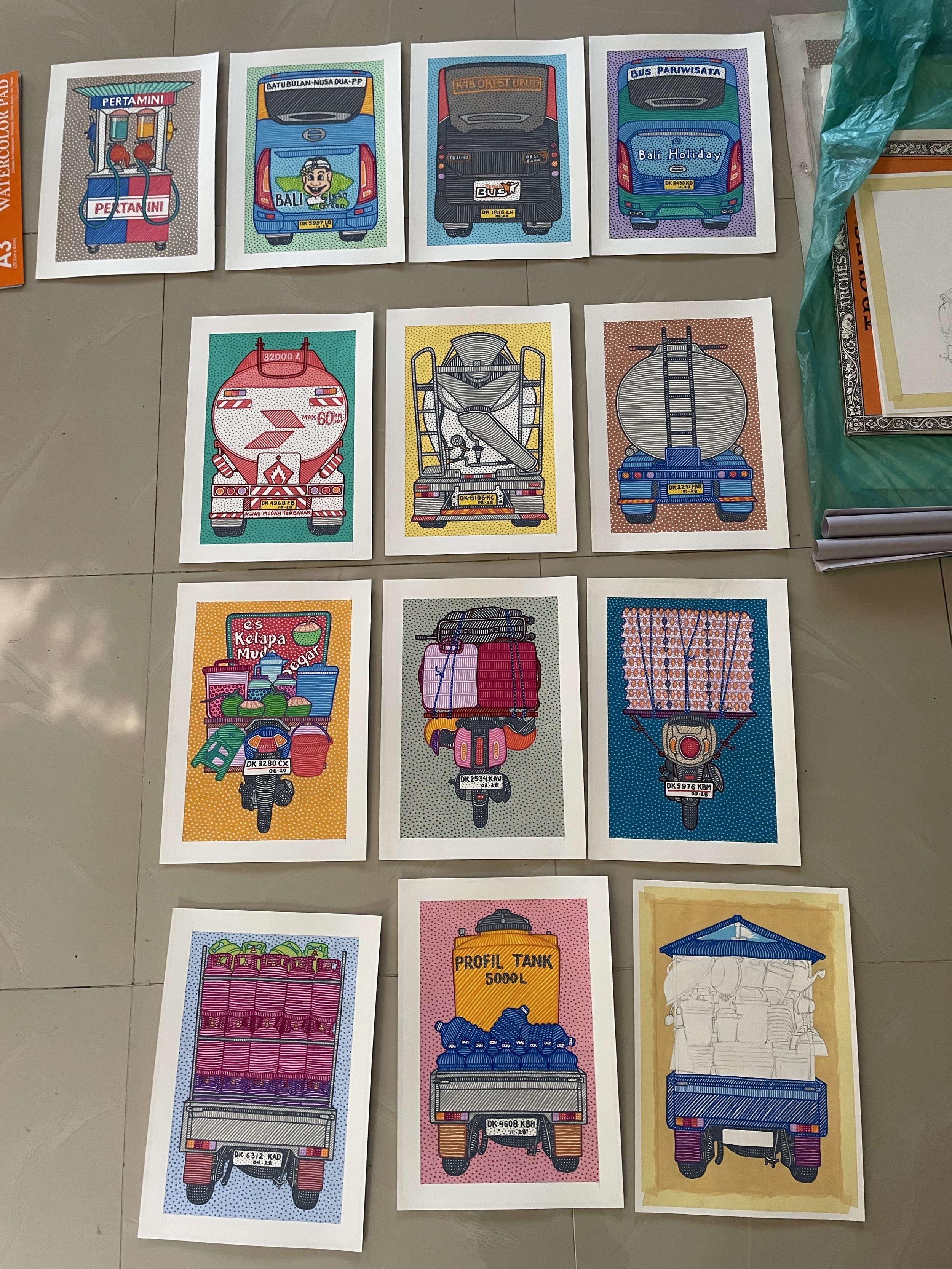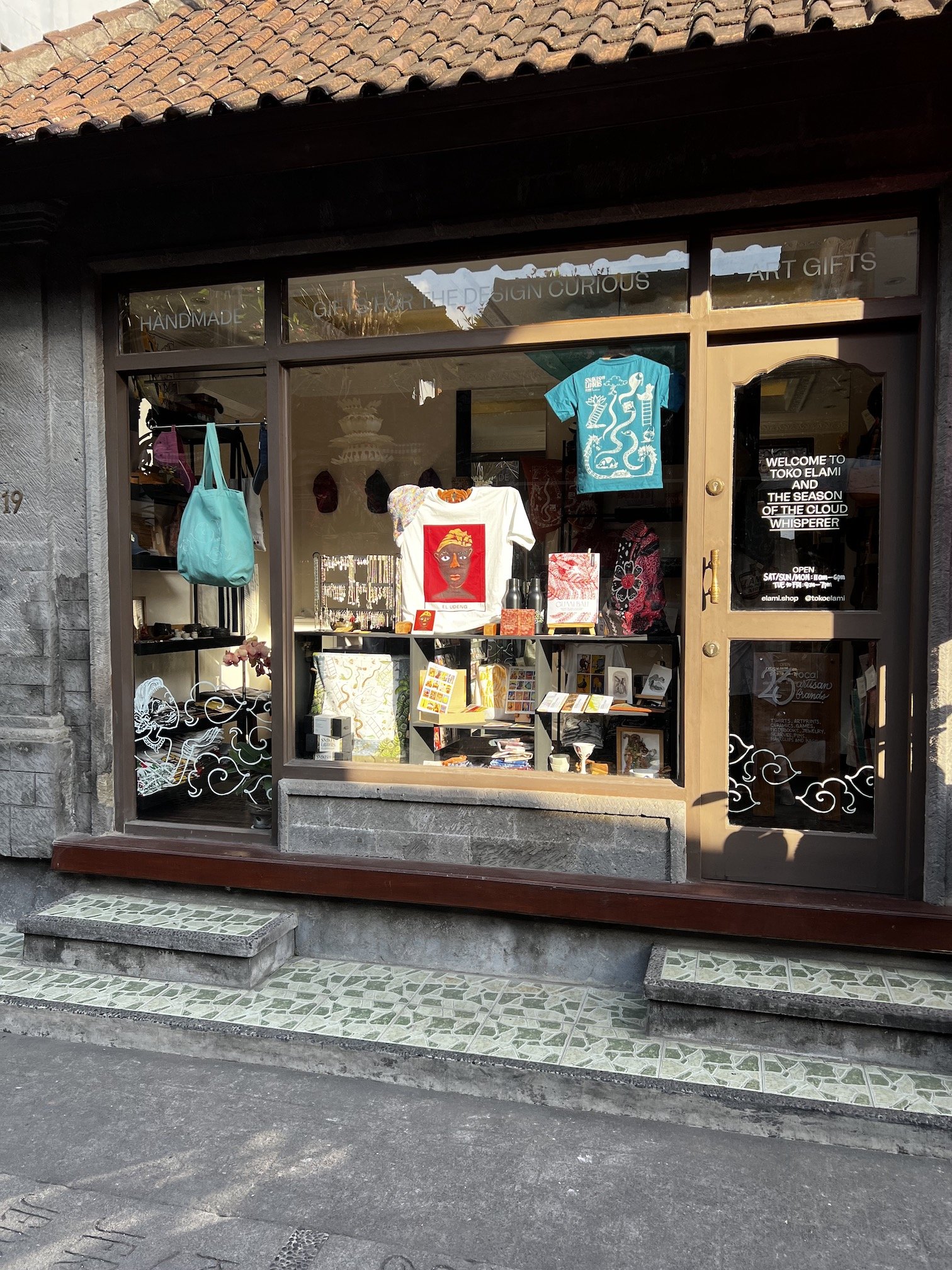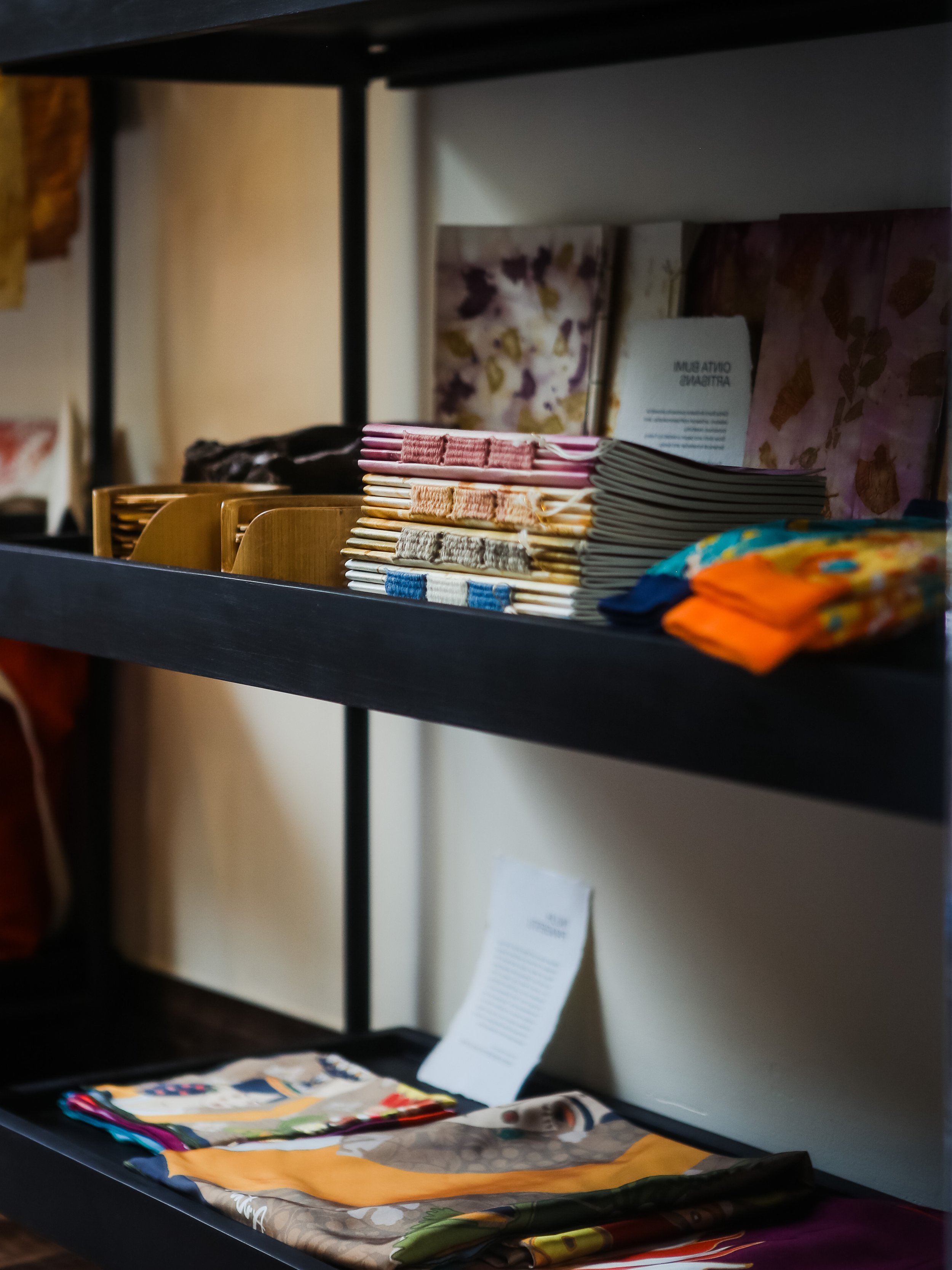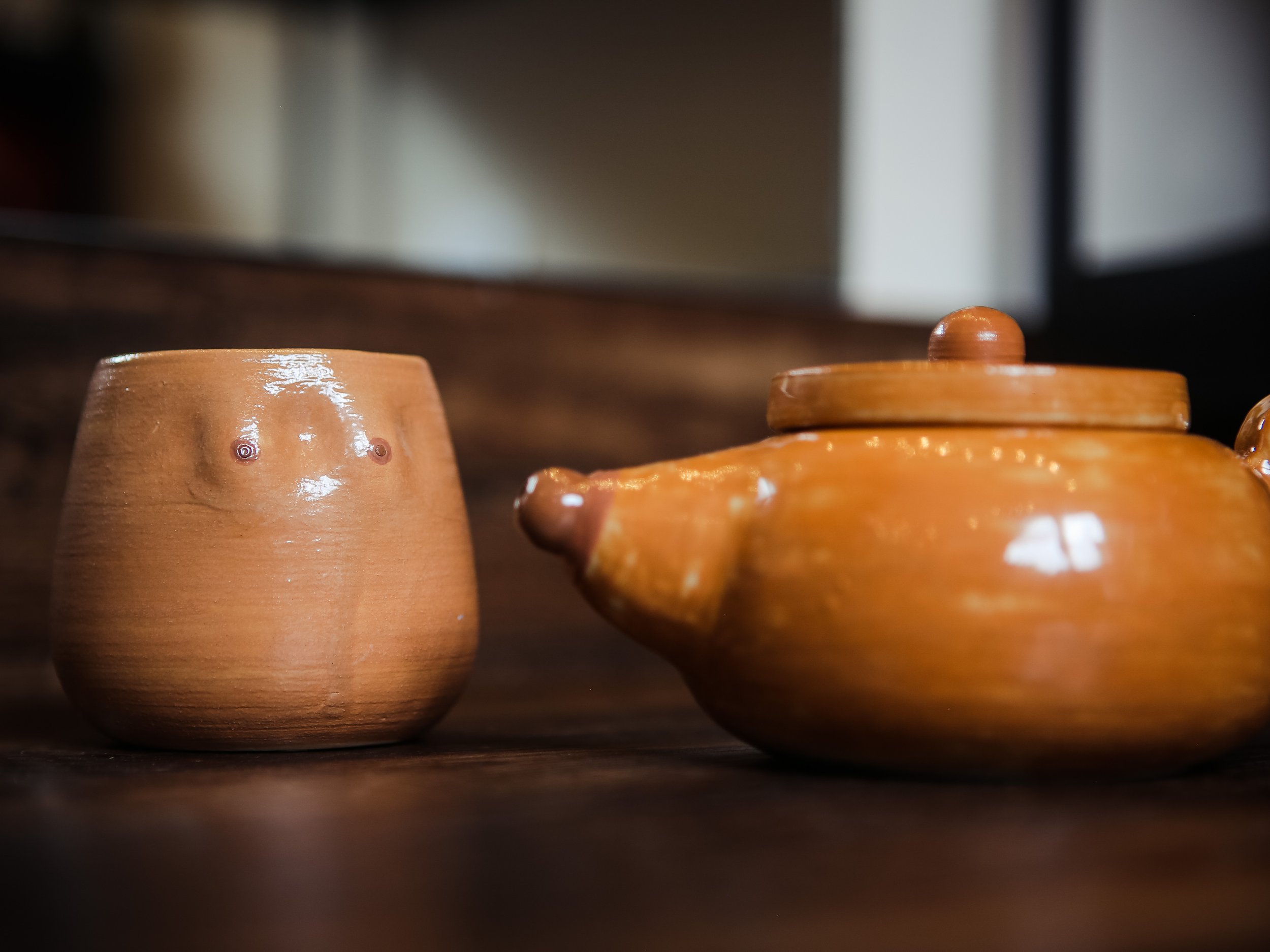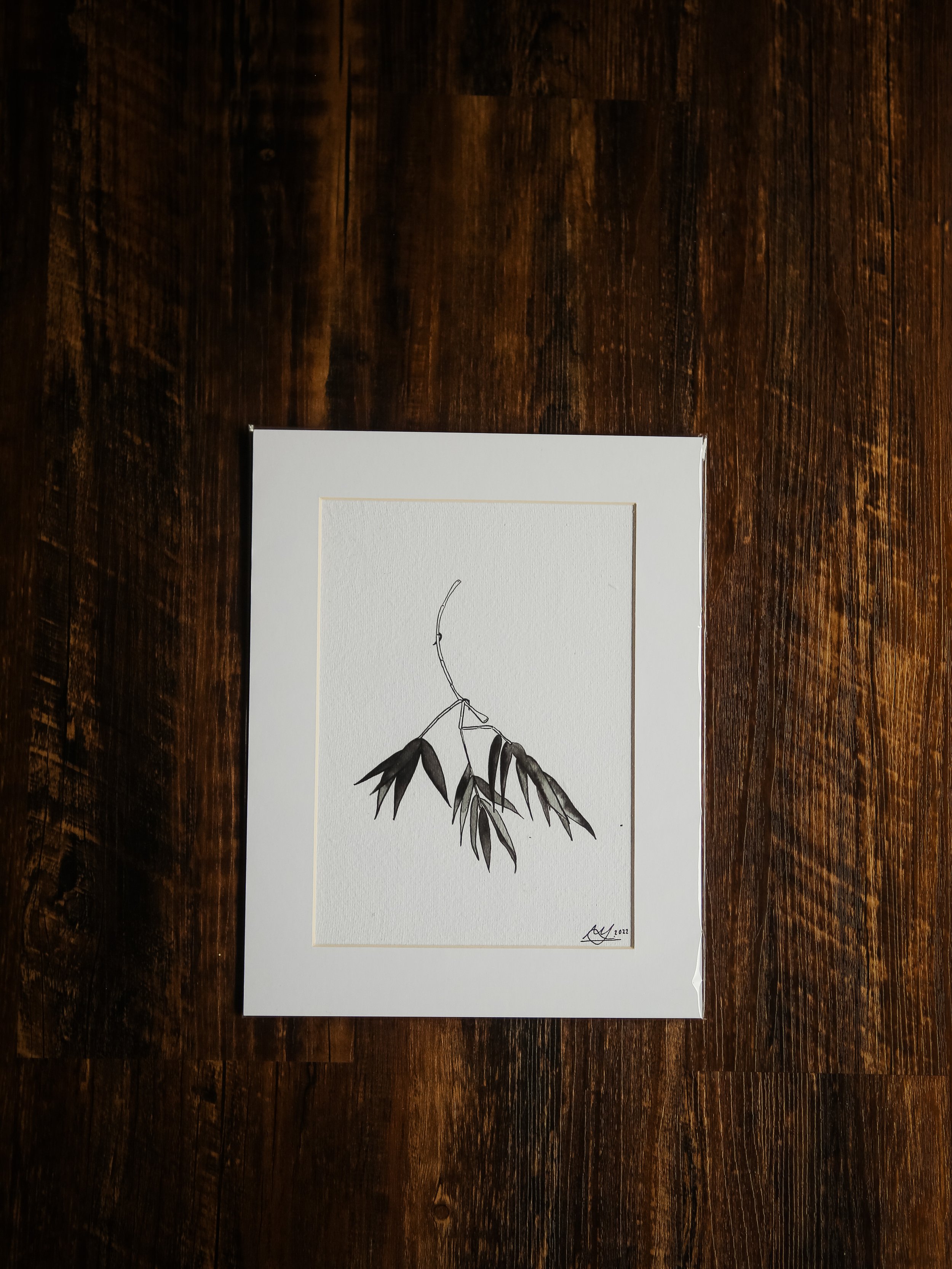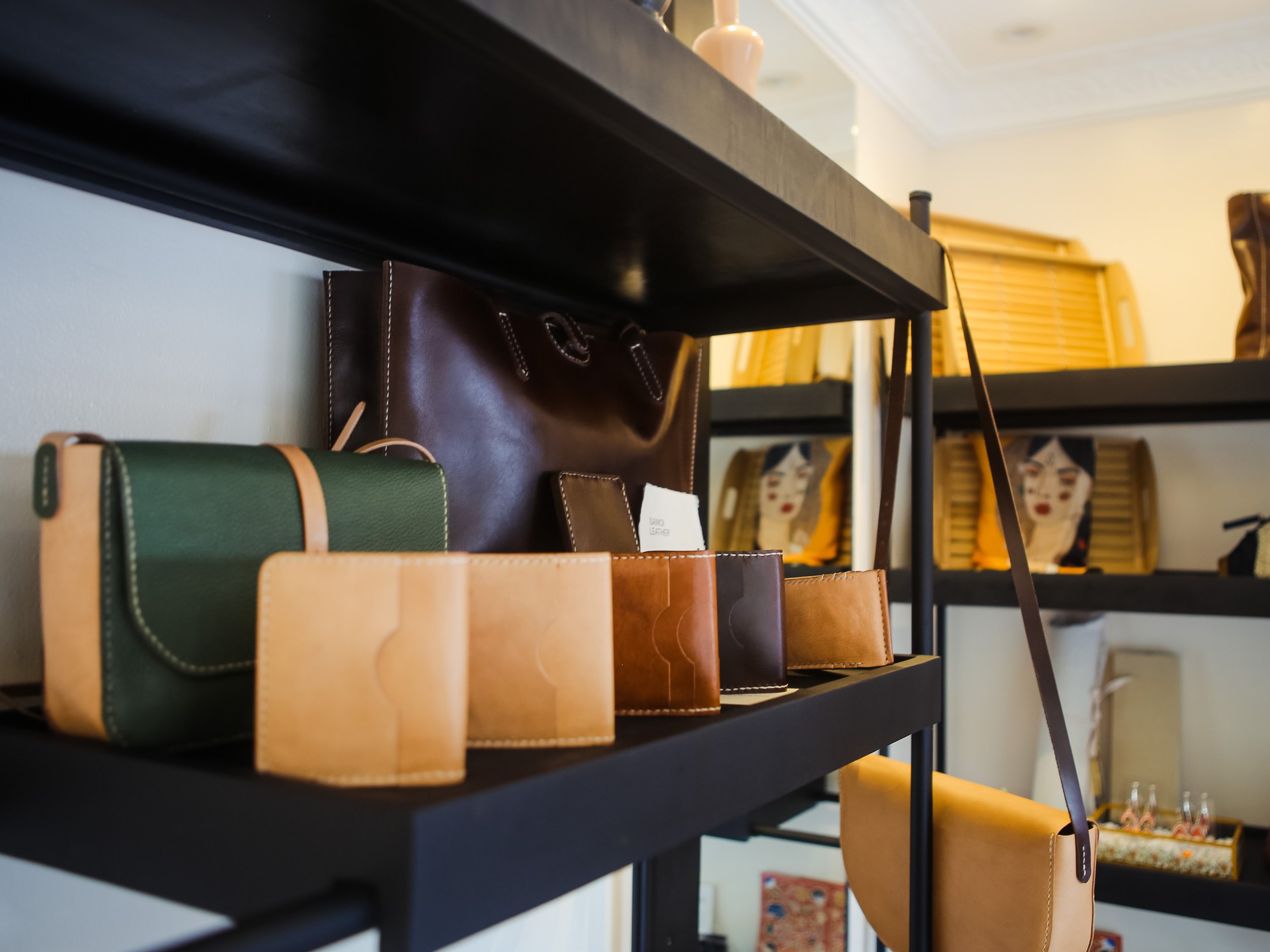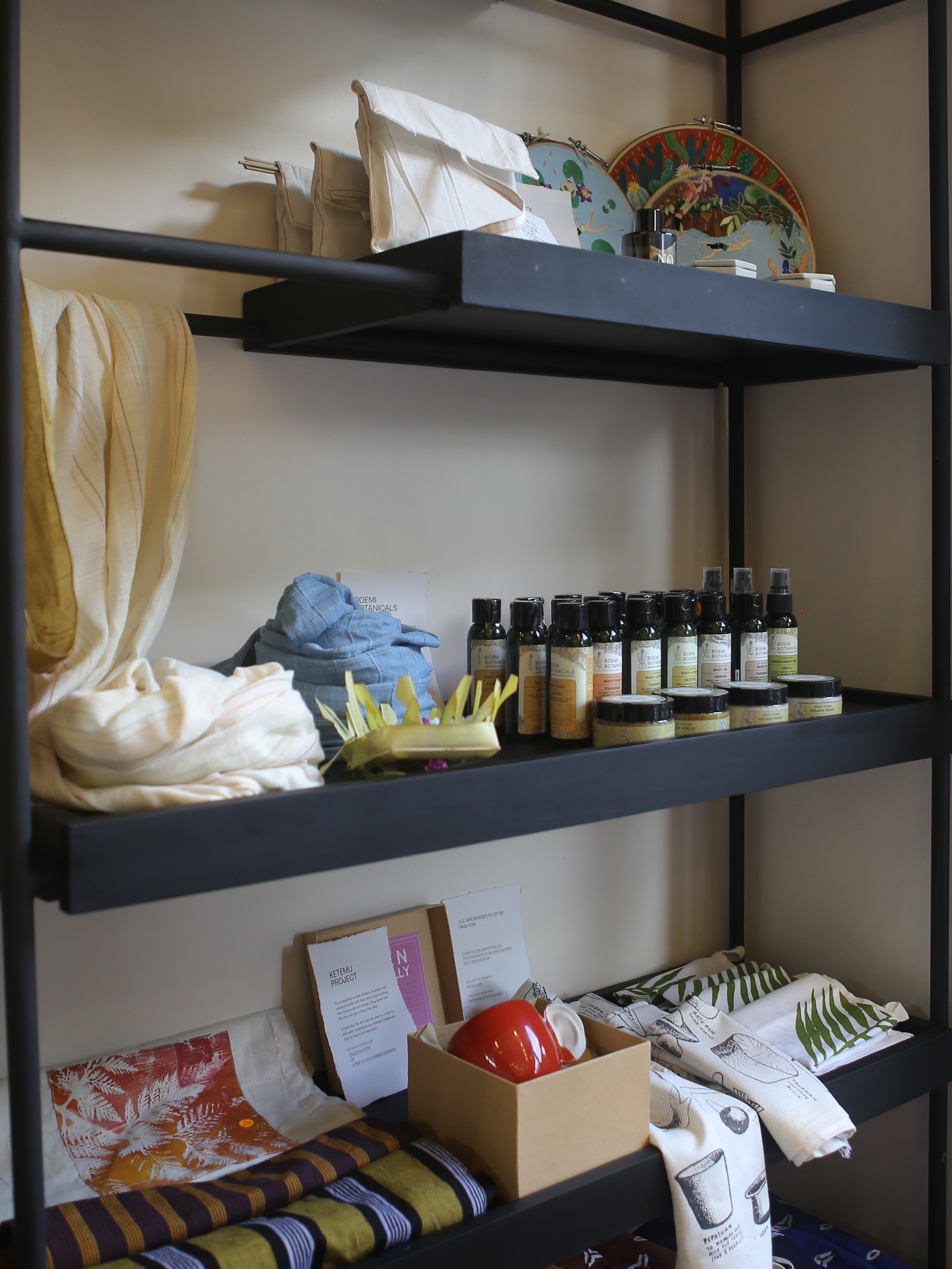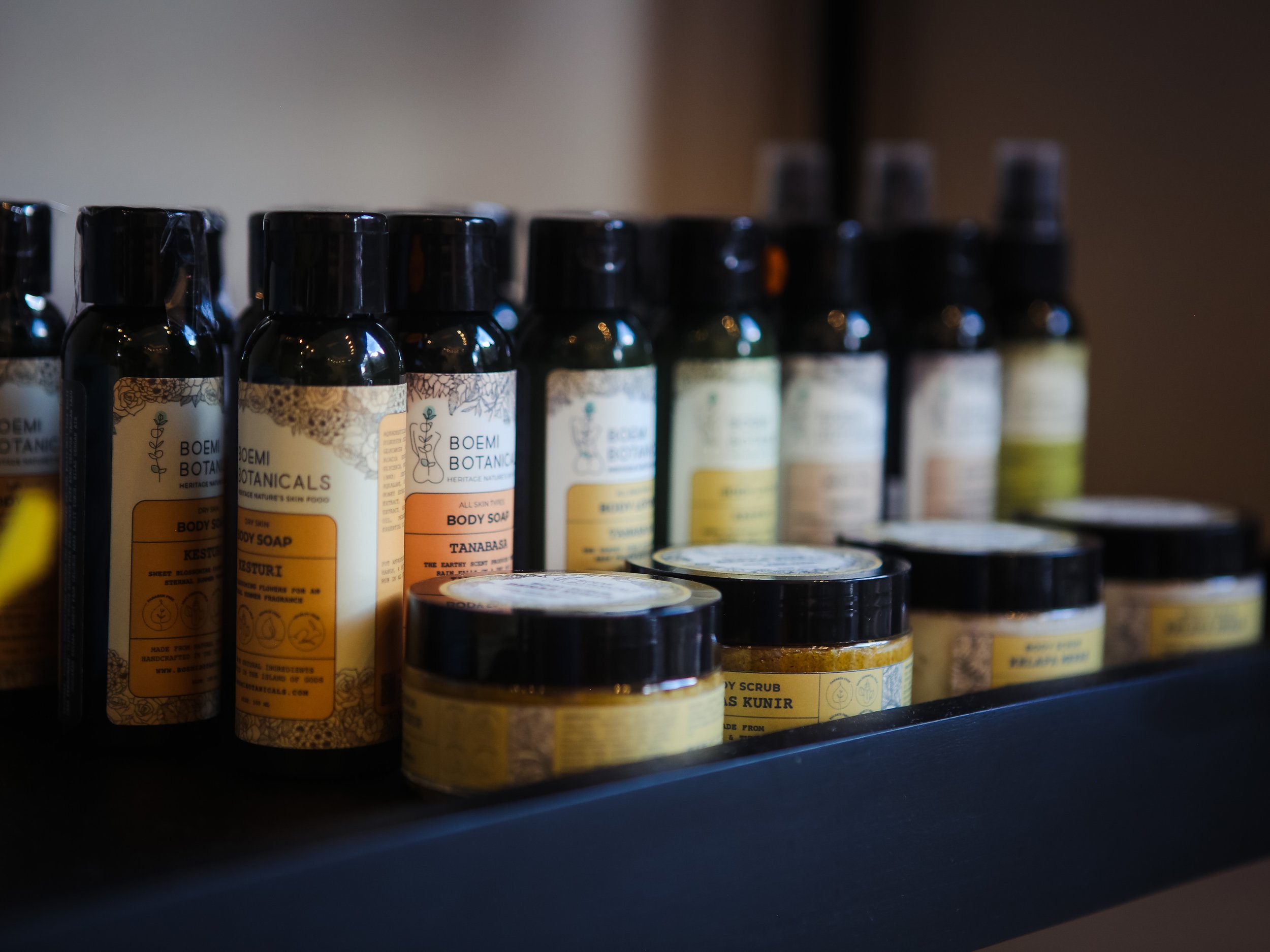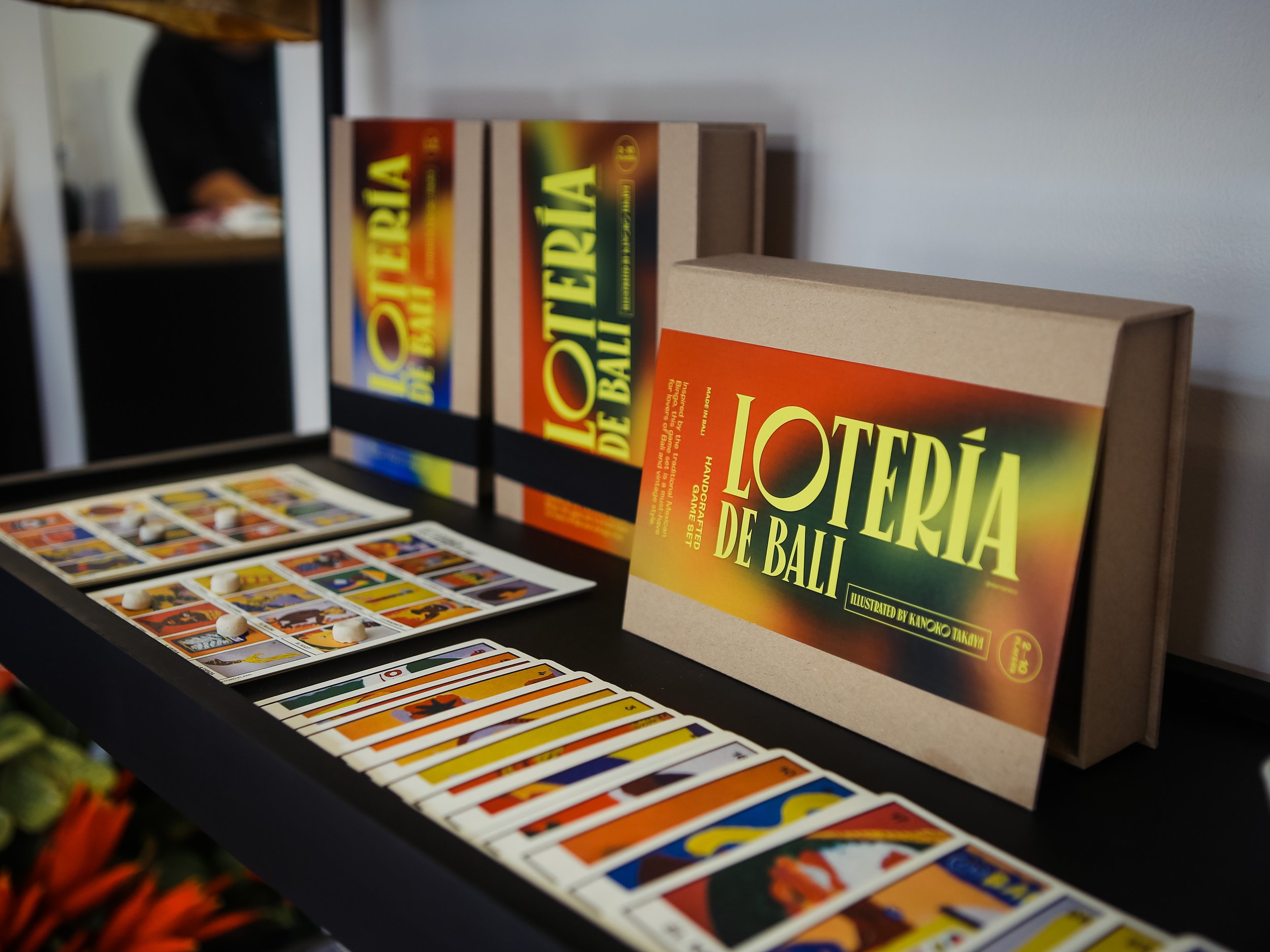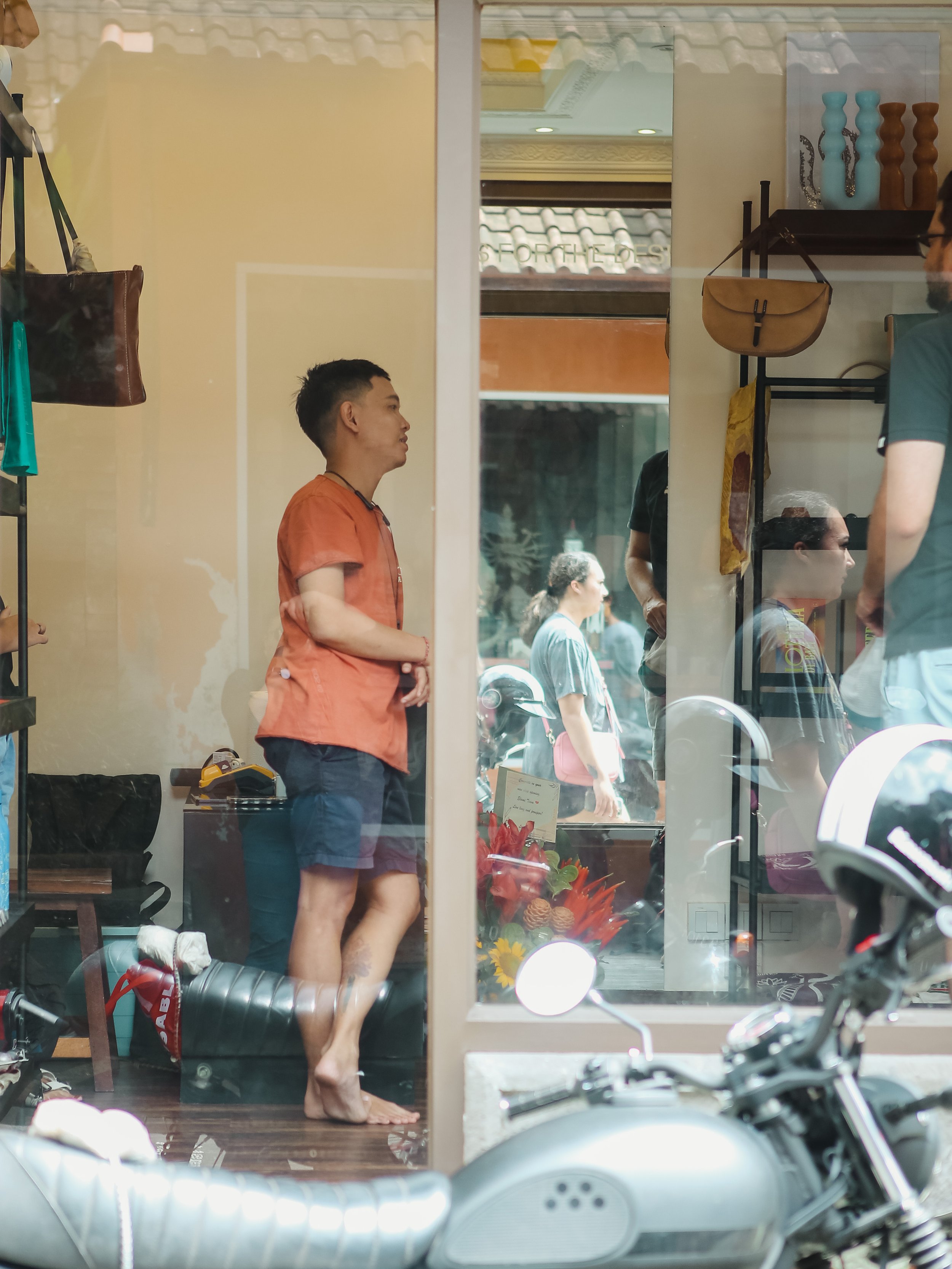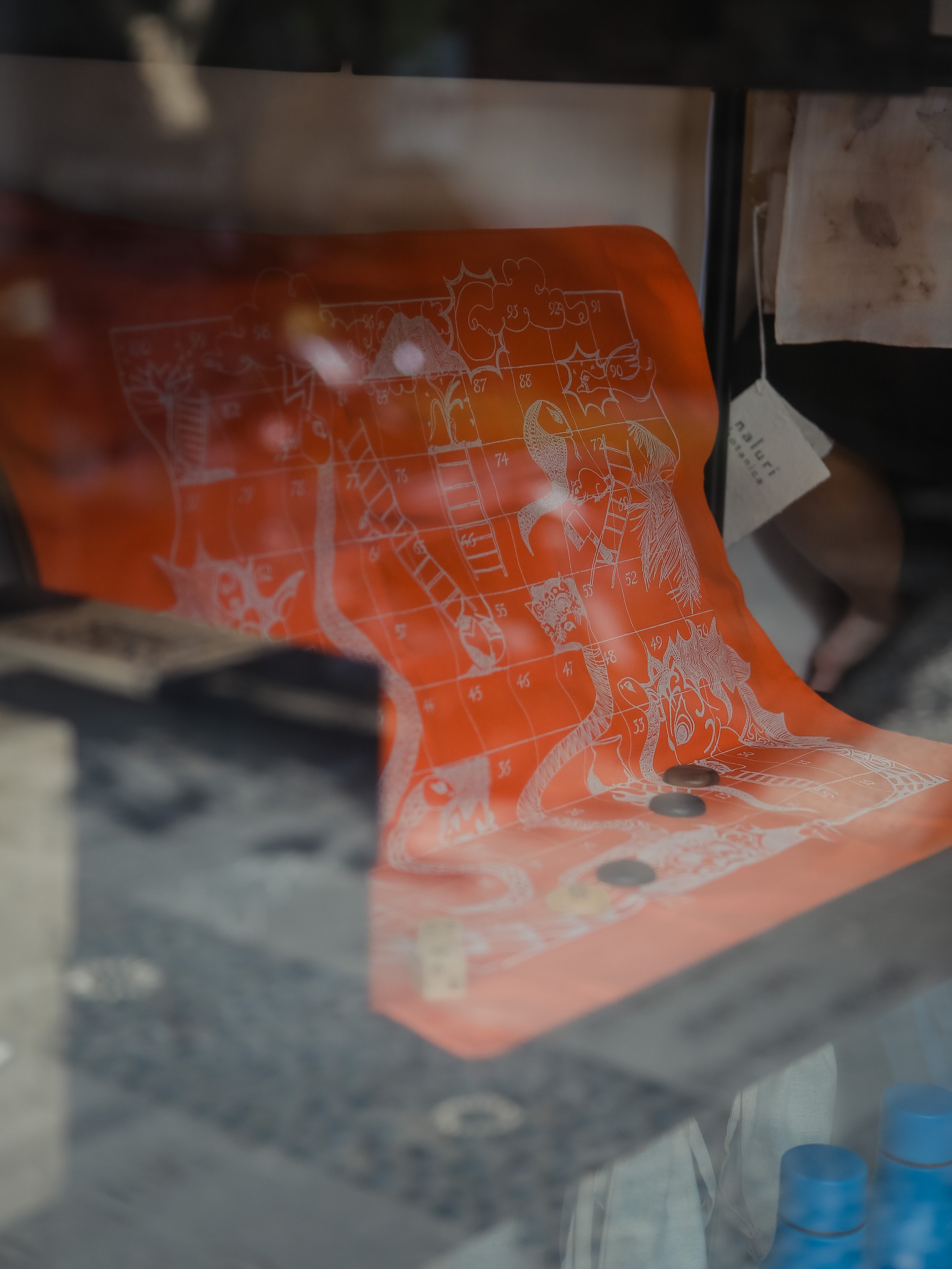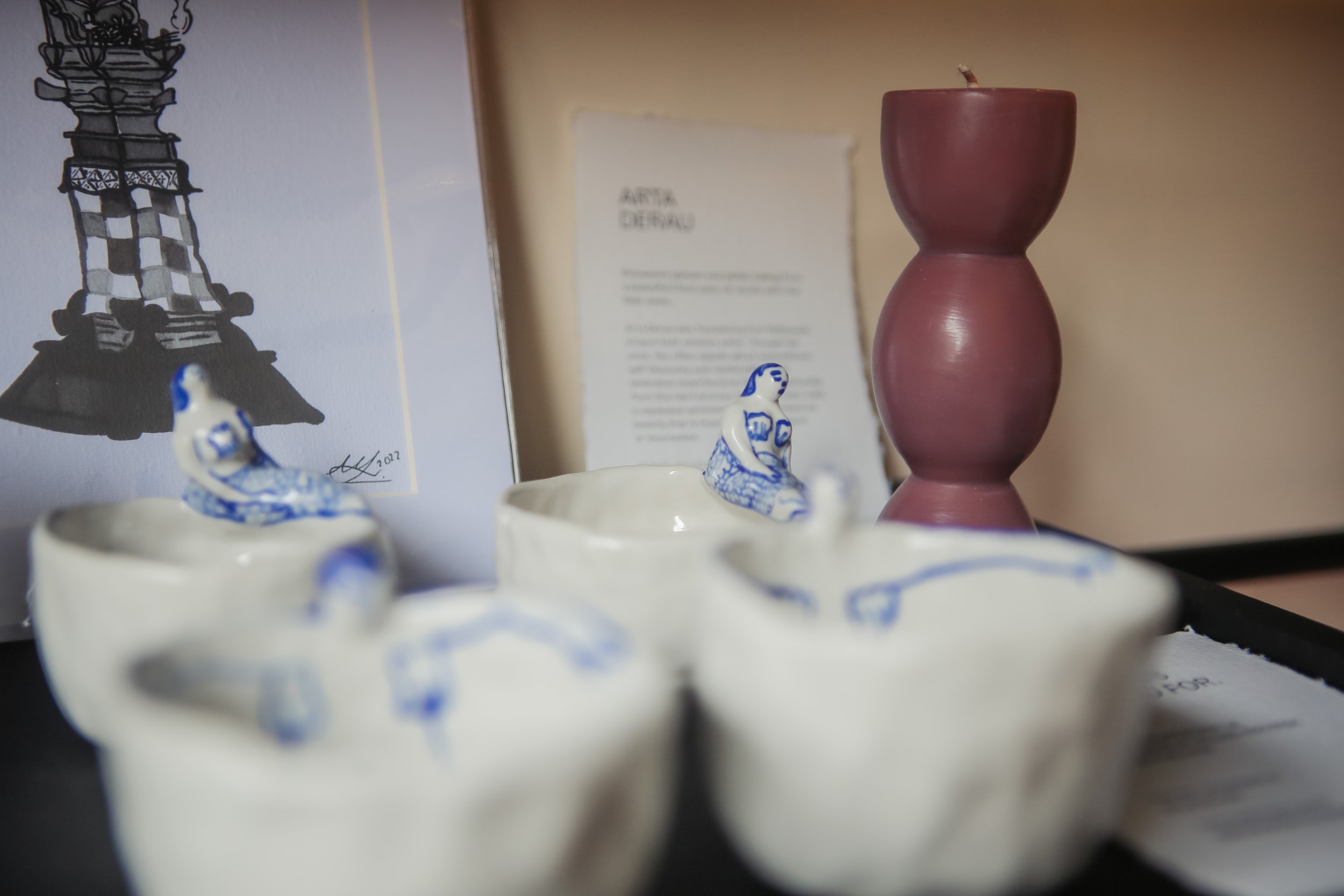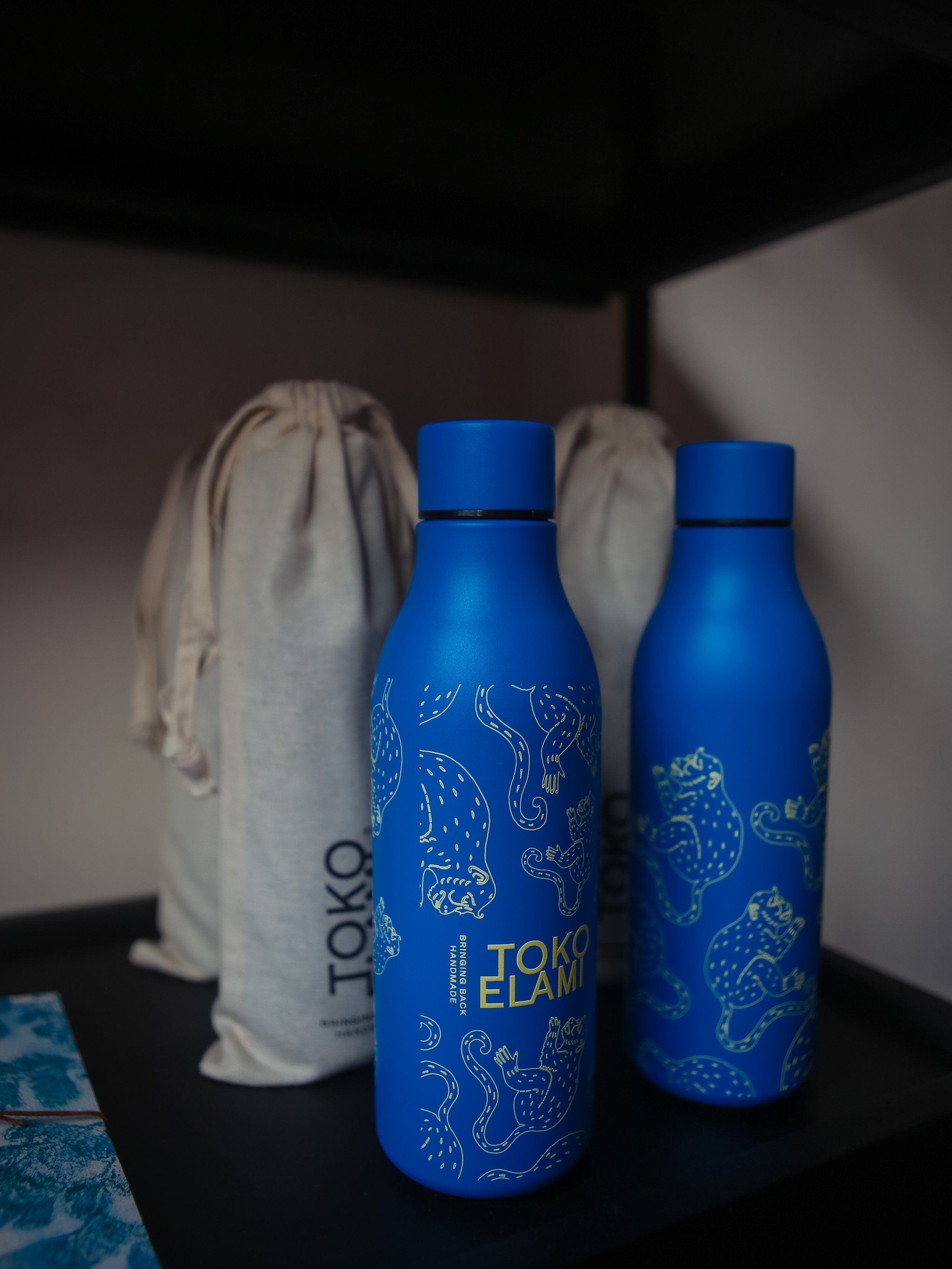The launch of Bali Macet at Titik Dua
/In the Bali Macet exhibition, Dodit Artawan captures the vibrant pulse of Bali's iconic traffic jams (macet) through a fusion of meticulous pointillism and explosive pop art. This series is not merely a celebration of Bali's roadside culture but a commentary on the intersection of consumerism, globalization, and the fetishization of everyday objects. The exhibition was at Titik Dua from March 1-16th 2025.
The exhibit also marks the launch of the Bali Macet Playing Card Deck, a collaboration between the artist and Toko Elami. Each card in this deck is a window into the controlled chaos of the island's streets, where the back ends of motorbikes, cement mixers, and overloaded pick-up trucks become canvases for storytelling.
The artist draws inspiration from a rich tapestry of artistic giants—Van Gogh's rhythmic lines, David Hockney's bold colors, Roy Lichtenstein's static lines and Ben-Day dots, Edward Ruscha's graphic text, and Jonas Wood's flat planes of color. Yet, the work is distinctly its own, rooted in the visual language of Bali's streets and the artist's observation of daily life. From the mobile warung eateries to trucks bursting with kitchen utensils, each scene is a snapshot of Bali's vehicle culture.
At its core, this series is a critique of contemporary consumerism and its allure. The artist explores how mass-produced objects—plastic products, street food stalls, and overloaded motorcycles—shape our perceptions and desires. By fetishizing these objects, the work reveals the irrationality and hedonism of a society driven by consumer culture. Yet, there is also a sense of celebration here, a recognition of the creativity and resilience of individuals navigating this globalized world. The artist appropriates the aesthetics of consumerism, using bright colors and rhythmic lines to both critique and honor the lifestyle it represents.
The technique itself is a meditation on process and precision. Each line and dot is carefully placed, creating a visual rhythm that draws the viewer in. Up close, the tremor of the artist's hand is visible, a testament to the physicality and intimacy of the creative act. The interplay of lines and dots becomes a metaphor for the interconnectedness of modern life, where individual choices ripple out to shape the whole.
Bali Macet is more than a deck of cards or a series of paintings—it is an invitation to see the world differently. It challenges us to find art and joy in the everyday, to question the forces that shape our desires, and to celebrate the vibrant, chaotic beauty of life in motion. Through this work, the artist reminds us that even in the midst of traffic, there is poetry.


























